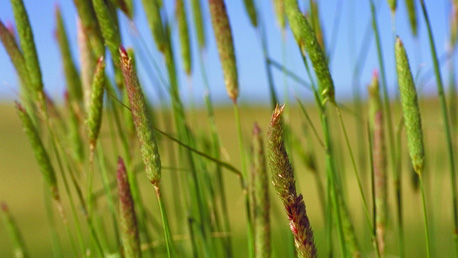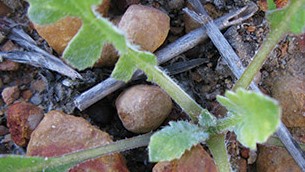Deadnettle
Lamium amplexicaule
Commonly referred to as deadnettle, because it looks a bit like stinging nettles but doesn’t have the sting, deadnettle is also known as henbit or stingless nettle. It is a widespread, low growing, annual or biennial weed that is particularly competitive in seedling vegetables and low growing crops. It commonly grows to 10 - 25 cm tall with soft, hairy stems emerging from the base of the plant, with clusters of about 12 pink-purple tubular flowers. Deadnettle can also cause staggers if grazed by livestock.

Description
Deadnettle germinates from winter to spring and is found in all states and territories. The leaves of deadnettle are 2 - 3 cm in size, sit opposite on the stem and are rounded with a lobed edge. The lower leaves have stalks while the upper leaves are stalkless and appear fused to the stem. Pale pink to rose coloured flowers that are 1.5 - 2 cm long are most commonly observed in late-winter and spring.
Control
Deadnettle spreads by seed, so weed control should be focused on preventing seed set.Betanal® Flow is registered for the control of two-leaf deadnettle in beet crops. Sencor® is registered for the control of deadnettle in asparagus, tomatoes and potatoes.
In broadacre cereals, Velocity® is registered for the control of 2 - 6 leaf deadnettle in wheat, cereal rye, triticale and barley. Precept® is registered to control up to six-leaf deadnettle in wheat, barley, oats, cereal rye and triticale. Hussar® is registered for the control of up to four-leaf deadnettle in wheat only.
Brodal® Options can control up to four-leaf deadnettle in clover-based pastures, field peas, lentils and lupins. Sencor also has registrations in barley, chickpeas, faba beans, lentils, peas, vetch and white lupins. Roundup Ultra® MAX, Roundup Ready® Herbicide with Plantshield® and Roundup Ready PL are registered for the control of deadnettle in a range of situations.
Balance® is registered for the suppression of deadnettle in chickpeas.
References
Atlas of Living Australia (Viewed April 2020), ‘Lamium amplexicaule L.’, https://bie.ala.org.au/species/https://id.biodiversity.org.au/node/apni/2915890Herbiguide (2014), ‘Deadnettle’, Herbiguide, http://www.herbiguide.com.au/Descriptions/hg_Dead_Nettle.htm
PlantNET (Viewed April 2020), ‘Lamium amplexicaule L.’, New South Wales Flora Online, http://plantnet.rbgsyd.nsw.gov.au/cgi-bin/NSWfl.pl?page=nswfl&lvl=sp&name=Lamium~amplexicaule














